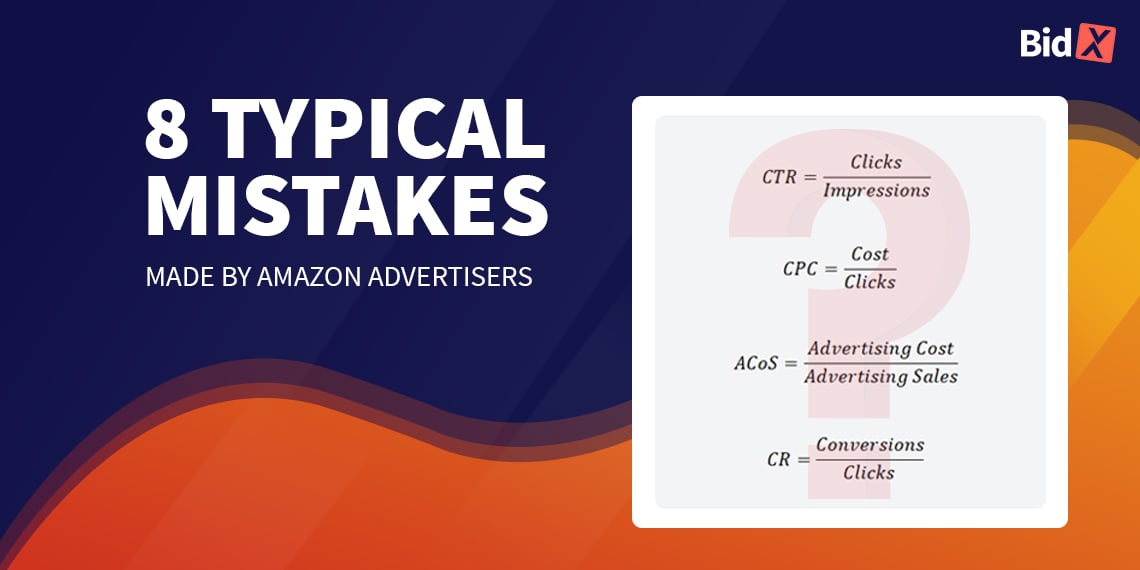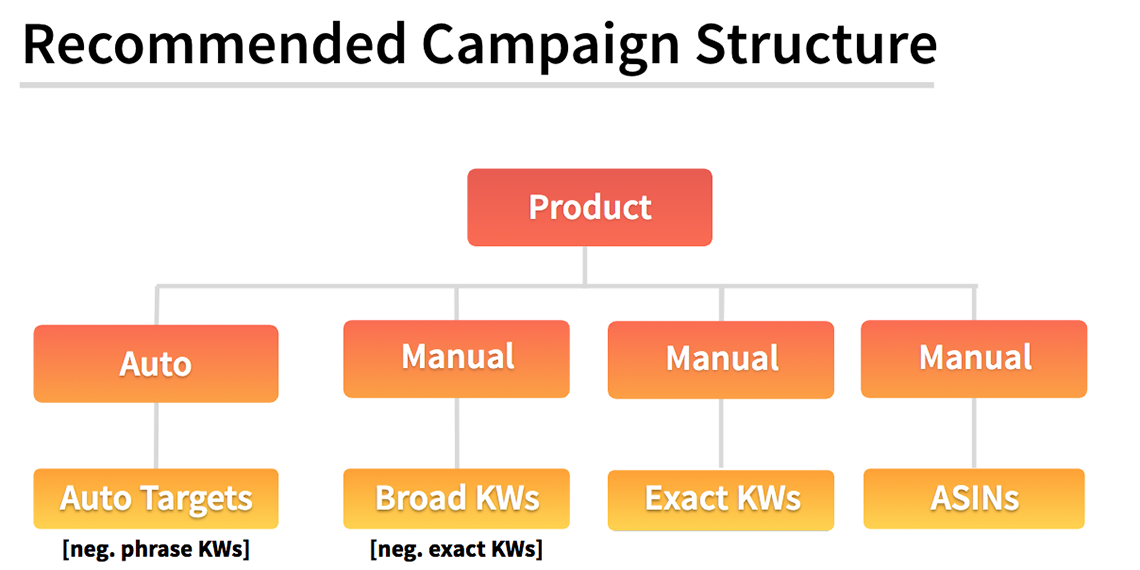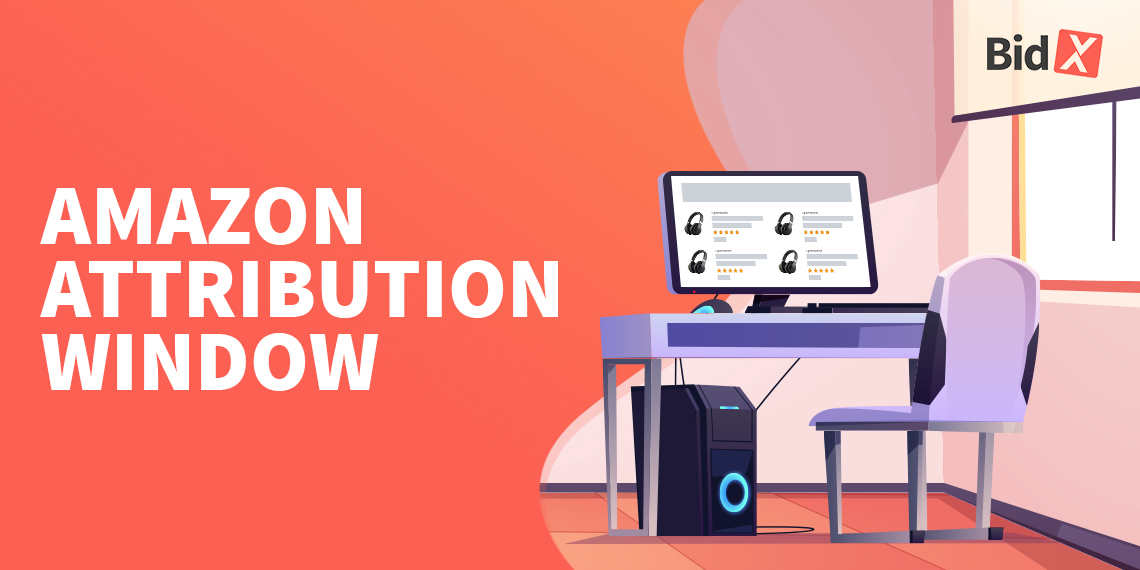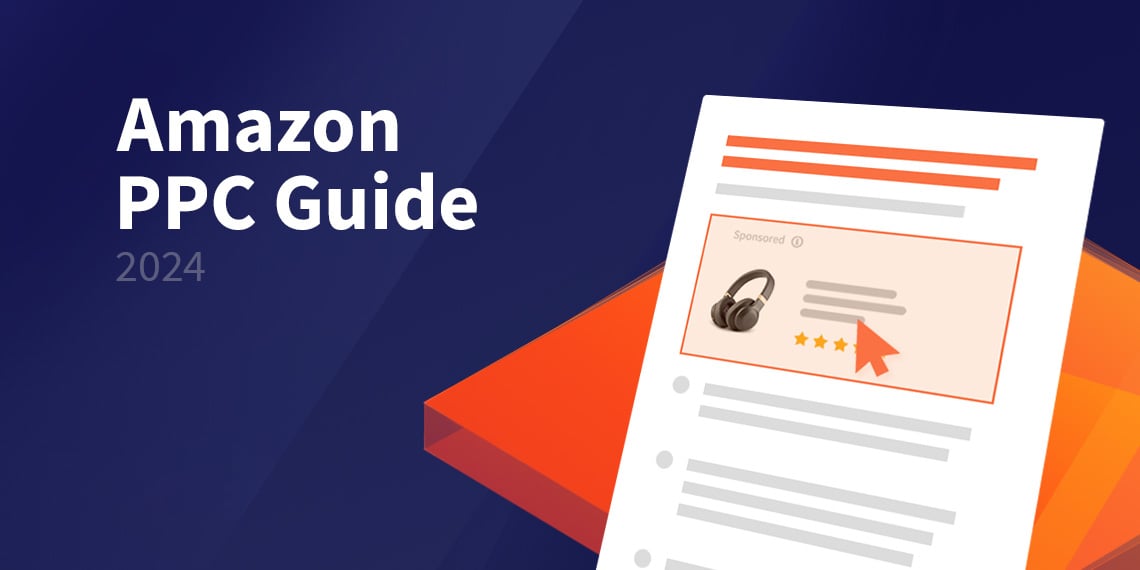Avoid these 8 Amazon Advertising mistakes made by beginners
If you’re not running adverts for your Amazon products, you’re in the minority.
Jungle Scouts’ latest Amazon Seller survey shows 81% of all sellers use paid advertising. With Amazon’s PPC Sponsored Products being the most common type sellers use.
You already know that competition is fierce on Amazon. So if you’re about to start your first advertising campaign, don’t waste your precious ad budget on these eight common mistakes.
#1. You’ve not optimized your product listing
It’s critical to optimize your product listing for SEO. It helps you rank higher in organic product searches, and it benefits your PPC campaigns.
The Amazon search results display different products that meet a shopper's search intent. In other words, the only reason Amazon shows your product — via organic ranking or a sponsored ad — is because Amazon thinks a shopper might buy it.
Amazon is a money-machine, and its success lies in helping customers get what they want. The customer starts the shopping process by using keywords. So as a seller, you need to ensure that you use suitable keywords in your product listing.
Distribute your target keywords throughout your product title, bullet points, and product description. That way, when a shopper searches for them, your product has a chance of being returned.
This Seller Central article gives you guidelines for adding keywords to your product listing.
Takeaway: An SEO-optimized product listing results in better ad placements and more ad appearances, ultimately leading to more clicks and sales.
#2. You haven’t set any goals for your products or campaigns
If you don’t set goals for your sponsored listing ad campaigns, you operate without a strategy.
While the primary goal of all advertising is to make more sales, there are secondary aims too. You might want to—
- Increase product engagement.
- Build brand awareness.
- Reach new markets.
If you're trying PPC advertising for the first time, you most likely want to make more sales. We recommend you set your advertising goal around your ACoS metric.
ACoS stands for Advertising Cost of Sales. It’s the measure of how much you spend on advertising to make a sale.
ACoS is expressed as a percentage. You calculate it by dividing your total ad spend between your total sales.

Say you spend $50 on advertising and it generates $200 in sales, your ACoS would be 25%.
Whether an acos is bad or good cannot be said in a generalized way. Some sellers accept a higher ACoS in order to increase their brand awareness, for example. If the goal of your ads is profitability, you should set the margin in relation to the acos.
Example: If a retailers profit margin with product x after deduction of all costs is 21%, the dealer with an ACoS of 21% makes no loss for this product - but also no profit. The aim for the ACoS is to be below 21%.
Takeaway: Having unclear goals is a quick route to loss-making ad campaigns and wasted ad spend.
#3. You’ve not done detailed enough keyword research
There is likely a wide range of keywords that are relevant to your product. If you don’t do thorough enough keyword research, you will miss some opportunities.
The keywords you use in your ad campaigns are essential—
Use too few: you won’t get enough ad impressions to make more than a trickle of sales.
Use too many (unnecessary): you risk over-paying for wasted clicks that don’t result in a sale.
To compile a starting list of keywords, take a combination approach to find ones with potential. You can cut down the list later to pick the best ones to use.
There are plenty of ways you can discover keywords.
- See what keywords your competitors use for similar products
- Spend 30 minutes brainstorming them; how many can you think of?
- Type combinations of product words into Amazon autocomplete (shown below)
- Use one of the many free keyword tools

You should consider both Fat-Head and Long-Tail keywords.
So-called Fat-Head keywords consist of only one or two words and usually have a high search volume and high competition.
Long-Tail keywords often contain a whole key phrase - several words - and usually have a low search volume and little competition.
Takeaway: Make time for in-depth keyword research before you start advertising.
#4. You’ve not thought about your Amazon ads campaign structure
The way you structure your PPC campaigns is important because of the way that Amazon reports on your ad campaigns.
Amazon PPC reporting only shows the performance of keywords at the Ad Group level. If you combine products (even similar ones) into the same ad group, it’s harder to match keywords to product sales.
If you can’t match keywords to product sales, calculating ACoS accurately for each ASIN is difficult.
We recommend creating four campaigns for each product ASIN, as shown in the image below.
Read more about BidX’s recommended Amazon PPC campaign structure.
Takeaway: Structuring your PPC campaign incorrectly makes it harder to measure ACoS for individual ASINs.
#5. You don’t use negative keywords nor move good keywords to a dedicated ad group
Millions of shoppers perform millions of searches on Amazon every day. You need to have tight control over your keywords so that you don’t appear in irrelevant searches.
Furthermore, when you find a profitable keyword, you want to place it in its own exact ad group to control costs better.
You can prevent your product from appearing in irrelevant searches by using negative keywords. A negative keyword is a keyword where you don’t want your advert to show.
Let’s say you sell wooden chopping boards. You may use the keyword ‘chopping board’ in one of your ad groups. But, you don’t want your ad to appear when a shopper uses the keywords ‘glass chopping board’ and ‘plastic chopping board.’
If you’ve set your ad group to broad match or run automatic campaigns, then your product could still show. Meaning you are potentially wasting your ad budget on irrelevant clicks.
Set up lists of negative keywords you can use in these types of ad groups. It’s also worth including lists of ‘junk keywords’ in your negative keyword lists.
You don’t want your ad showing when a shopper searches for ‘free’ or ‘used.’ So make sure you include these word types on your negative keyword list.
Good keywords go in their own group.
When you find a good, profitable keyword, we recommend that you shift it to its own exact ad group. Single keyword ad groups make it easier to control CPC costs, and you can also take advantage of different keyword bidding strategies available with Amazon PPC.
Takeaway: When working with your Amazon PPC keywords, gain precise control over them—it’s better for your ad budget in the long run.
#6. You don’t adjust your bids when your campaign is running
Running Amazon PPC campaigns is never a set-and-forget process. You can find greater campaign profitability through tweaking and optimization.
When you set your ad campaigns up correctly, you have better control over your keywords. You can identify poor-performing keywords and lower their bids to stop wasting money.
Likewise, when you identify top-performing keywords, you can increase bids or swap them into a dedicated ad group to give them closer attention.
Amazon PPC ad performance is dynamic, which means that performance can change in real-time depending on clicks, sales, and competitor bids.
You need to give your campaigns attention regularly to make the necessary adjustments that maximize your ACoS.
BidX fully automates and optimizes your ad campaigns using machine learning algorithms. With our tool, you will save valuable time and increase the profitability of your campaigns at the same time. Try it for free today.
Takeaway: Just a garden needs weeding to keep it in shape; profitable campaigns need regular tending to keep them effective.
#7. You jump to conclusions and ignore the attribution window
The old saying ‘act in haste, repent at leisure’ applies when you judge the success of your Amazon PPC campaigns. Campaign analytics don’t update in real-time; you need to wait a while before making any changes to your bids and keywords.
The time it takes for Amazon to attribute sales to PPC ad clicks is called the attribution window.
You might make the attribution window error this way:
- A shopper clicks your ad and buys your product.
- You see a sale, but there is nothing in your campaign analytics to suggest that it’s due to your PPC ads.
- You hastily decide that a particular keyword is no good and strike it from your campaign.
- This is a mistake because you haven’t taken into account the way people shop online.
- Amazon knows that shoppers sometimes take a few days between clicking an ad and buying a product.
- So Amazon waits a few days to see which ad clicks turn into sales. They call this the attribution window.
- Had you waited a few days, Amazon would have attributed the sale to a keyword you removed. You just deleted a good keyword!
Amazon purposely designed the attribution window to capture the complete picture of your ad’s performance. It can take as long as 14 days to attribute a sale to an ad click.
Takeaway: Jumping to hasty conclusions risks you making incorrect decisions about keywords and budgets.
#8 You don’t measure your performance
If you simply set up an ad campaign, let it run, and don’t measure your performance— you aren’t committing to the process.
It’s a competitive world where Amazon is concerned. For every seller that does the minimum and hopes things will turn out OK, there is another seller who will:
- Examine sales reports closely.
- Track product rankings.
- Monitor competitors.
- Experiment with product details copy.
- Focus on PPC analytics.
Make use of the data that is provided to you in Seller Central or the Advertising Console to improve your selling performance.
Takeaway: If you don’t measure your performance to help you maximize your results, you risk your competitors forging ahead of you.
Key Takeaways
Using paid ads to promote Amazon products is a common practice of the majority of Amazon sellers. Competition is so fierce that some form of advertising is now necessary to make it on the platform.
And when you advertise on Amazon, you need to commit to the process. You should set goals, focus on keywords, organize campaigns correctly, and interpret your analytics.
For more information about Amazon Advertising and helpful tips, read our Amazon PPC Guide.
If you don’t feel you have enough time to give Amazon PPC ads close enough attention, why not try BidX? BidX fully automates your Amazon advertising campaigns. We use machine learning algorithms to analyze advert performance continuously and automatically adjust your campaigns to increase profitability. Try it free today.






